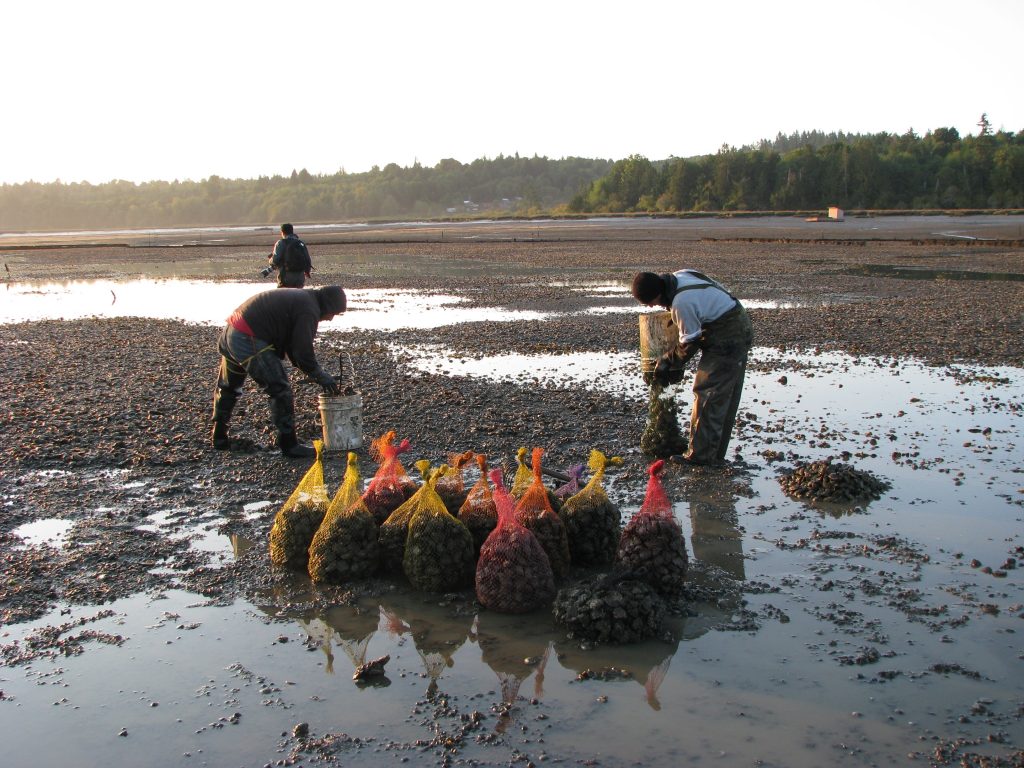
‘Tide to table’ and other trends gaining momentum
February 26, 2018
By Tom Walker
The Executive Director of Pacific Coast Shellfish Growers Association (PCSGA), Margaret Barrette, sees the tide-to-table trend strengthening in the shellfish industry.
“The oyster bar experience and being able to sample a variety of oysters from different locations is becoming extremely popular,” she says.
The trend has boosted half-shell sales. Several oyster companies have moved into the restaurant market and are able to control production from farm to plate. Washington’s Taylor Shellfish has four restaurants in Washington State and one in Vancouver BC, while Hog Island has led the industry in California for several years with three off-site oyster bars.
“It really gives companies direct control over the quality of product that is delivered to the consumer,” says Barrette. “I think we will see more of it, although it certainly requires a different skill set than farming.”
Barrette also sees the adoption of IMTA techniques by the industry as one trend that could also strengthen. IMTA, or Integrated multi-trophic aquaculture, is a process of combining the culture of a fed species (i.e. salmon) with other, extractive species such as shellfish and seaweed, or invertebrates such as sea cucumbers. In the shellfish industry, Barrette sees the co-cultivation of species such as oysters and kelp as being an important direction.
Innovative partnerships are also trending up. “I’m really interested to watch the innovative partnerships that several harbor districts are initiating,” says Barrette. She is referring to ventures and programs that a number of ports in the United States have initiated in recent years aimed at advancing aquaculture.
For instance, the Humboldt Bay Harbour District in California plans to go through the permitting process for aquaculture plots and then lease the “pre-permitted” property to farmers with the goal of encouraging future aquaculture production in the Bay.
“Permitting is a huge issue for our members as people are still reluctant to allow this use of the land,” says Barrette. “It’s a long, complicated and costly process.”
The Port of San Diego champions water-dependent businesses such as aquaculture and has established the Aquaculture and Blue Tech Program in 2016 to support them. Portland, Maine Redevelopment meanwhile has launched a plan that seeks to transform the municipal pier into incubator for aquaculture enterprises.
“You wouldn’t think of a port as getting into the shellfish business but they have so much infrastructure already in place,” says Barrette, “Its really exciting.”
Offshore farming is one direction that she sees strengthening as well. Catalina Sea Ranch is the first offshore shellfish farm permitted in United States federal waters.
 The shellfish sector has seen demand for “tide to table” dining experience grow over the past eight to 10 years
The shellfish sector has seen demand for “tide to table” dining experience grow over the past eight to 10 years Advertisement
- Washington State House committee rejects anti-salmon farming bill
- Permitting process curbs US aquaculture growth





